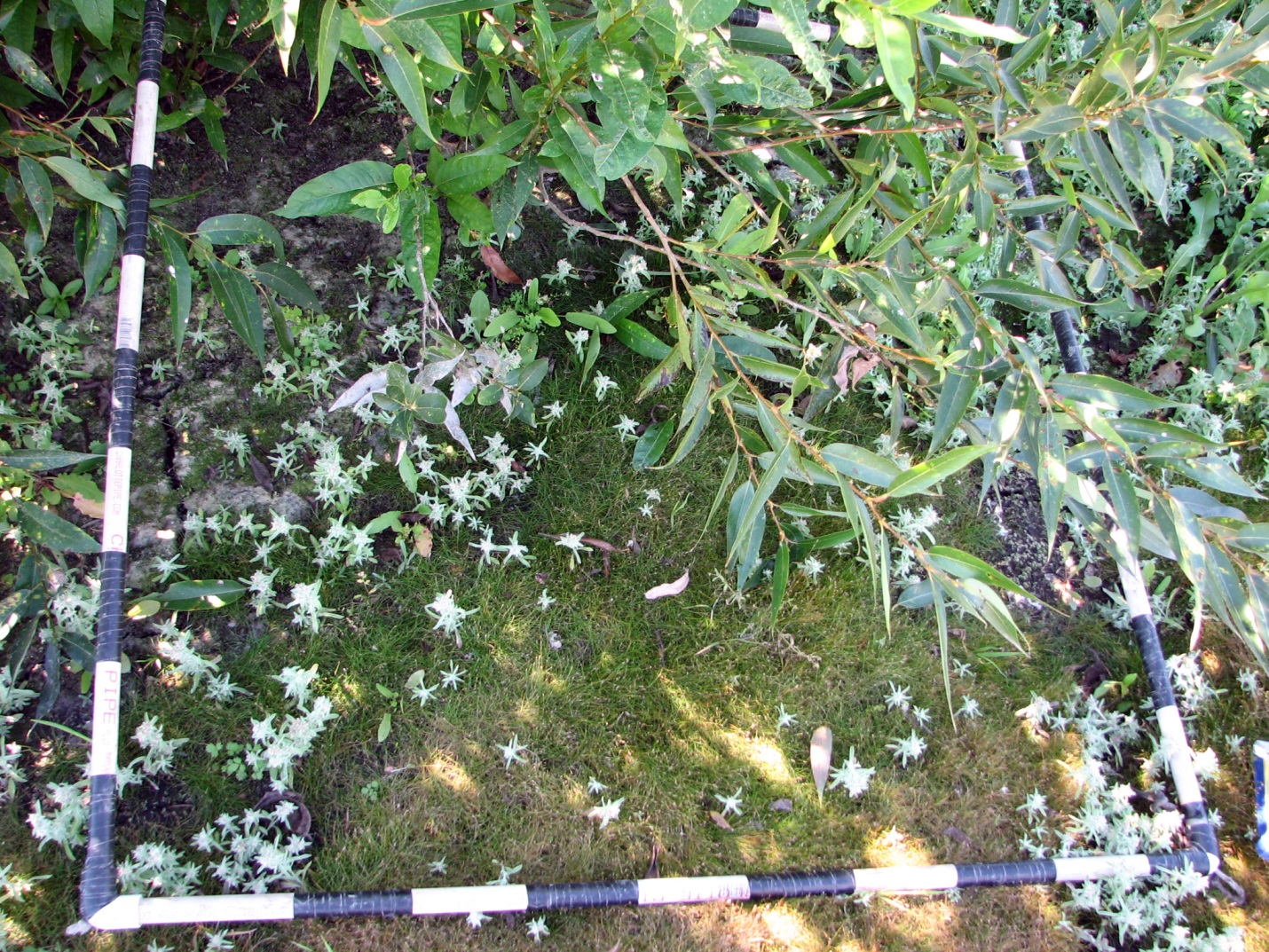Photo credit: Melissa Schroeder
The riverbanks and lake shorelines of the Klamath Basin were once lined with dense stands of willow and cottonwood, along with patches of emergent species. This vegetation matrix was structurally complex and provided important aquatic habitat for fish and wildlife. In the 1940s and 50s the delta was converted to a patchwork of agricultural lands, and connectivity to the river and lake was lost, eliminating the once-extensive vegetation.
 Example of wetland vegetation monitoring plot. Photo credit: Melissa Schroeder
Example of wetland vegetation monitoring plot. Photo credit: Melissa Schroeder
Open water, deep water wetland, emergent marsh, and riparian habitats were recreated following restoration at the Williamson River Delta Preserve. The bulk of vegetation recruited naturally and established in areas determined by flooding duration, water depth, and existing seed sources. In an effort to increase diversity, remediate disturbance, and battle invasive plant infestations, the natural recruitment has been supplemented with a variety of planting efforts. Willow, Tule, and Wocus lily have been planted in wetland areas. Ongoing wetland monitoring has indicated an increase in diversity and a transition from pioneer species to early/mid-seral species.
The Williamson River Delta Preserve also contains substantial upland areas, totaling 275 acres, and restoration of these areas began in 2005. A variety of native species has been seeded into the former agriculture fields. The upland areas do not have the same benefit of natural vegetation recruitment as wetlands. Establishing and maintaining native bunchgrass and forb species, as well as combating invasive species are an ongoing effort. Since 2010, revegetated upland areas have been monitored for success annually to guide further management. Check out our monitoring reports to learn more.
Links below this line are automatically generated and may not directly relate to work in Oregon.
________________________________________________________________________
